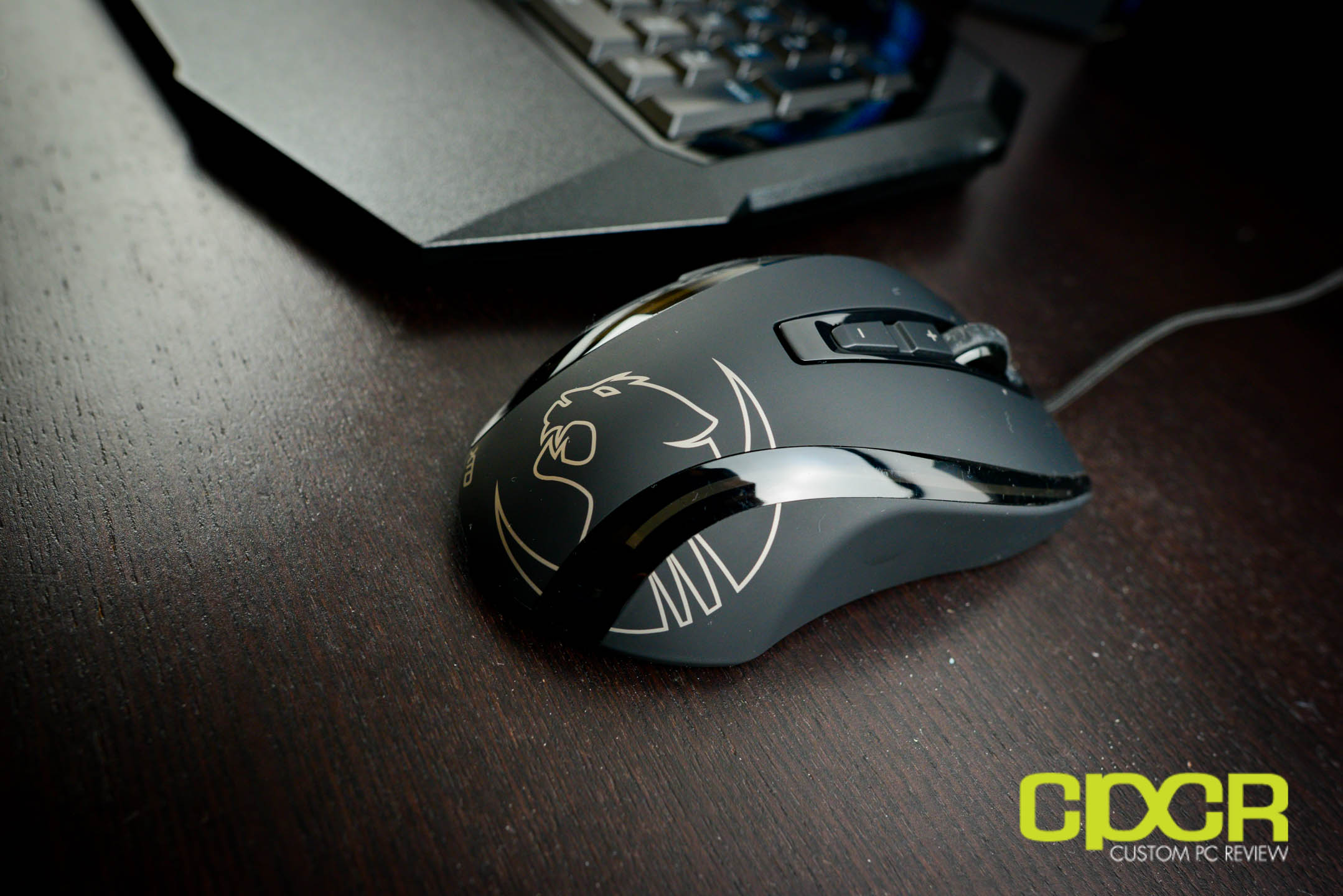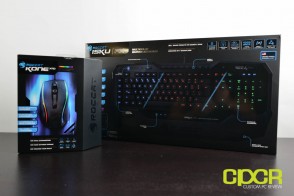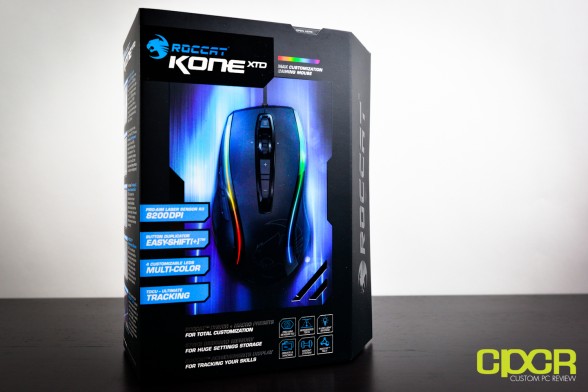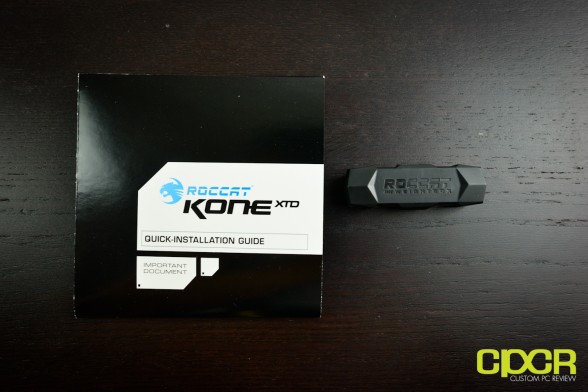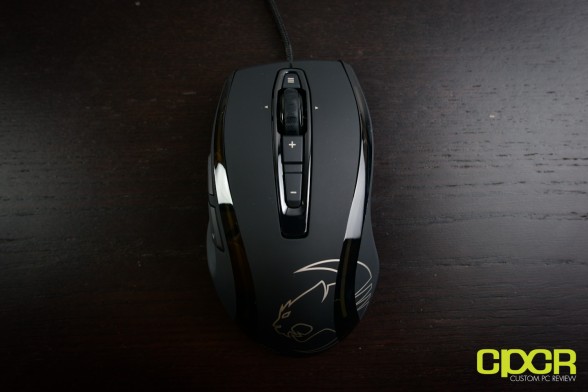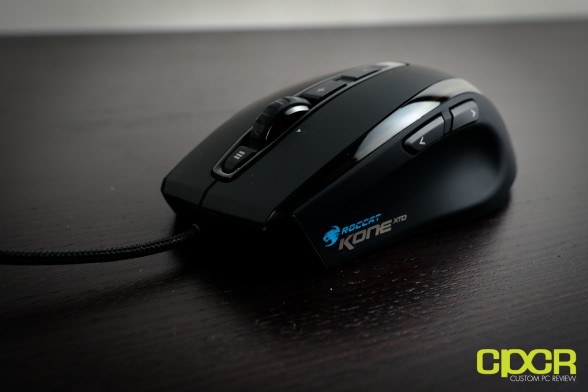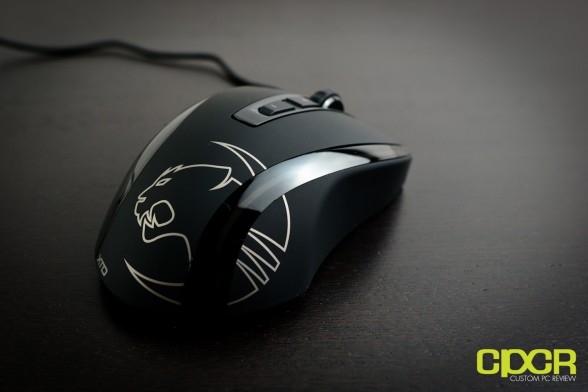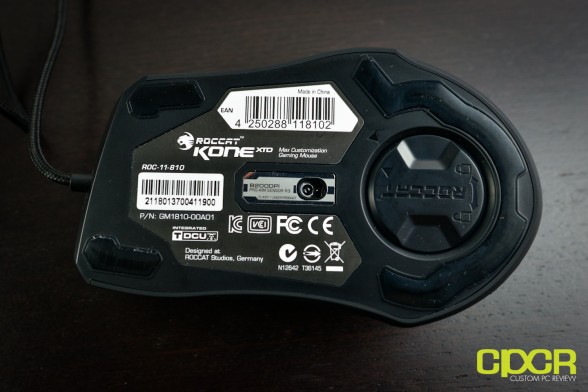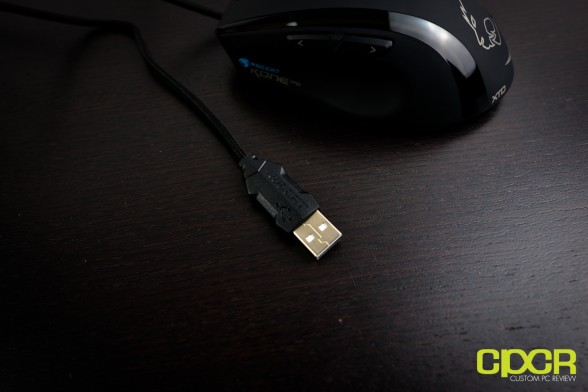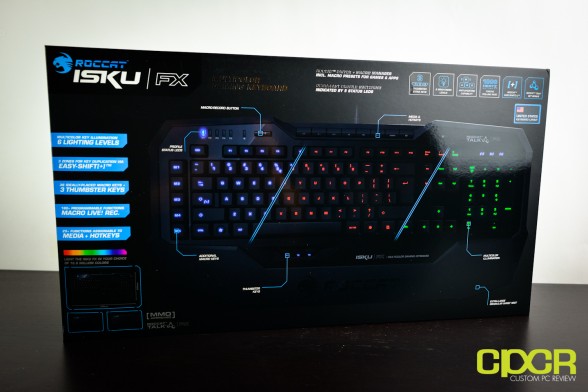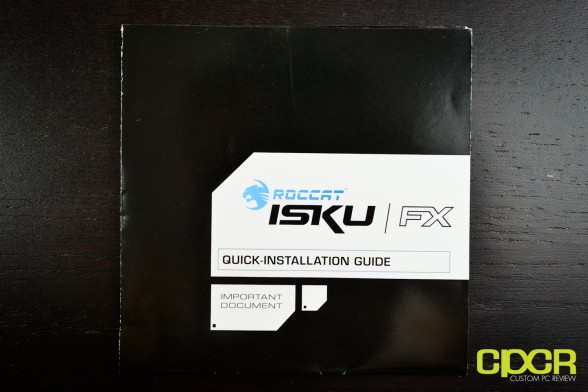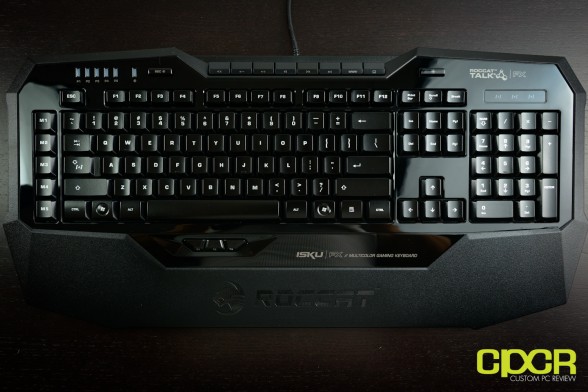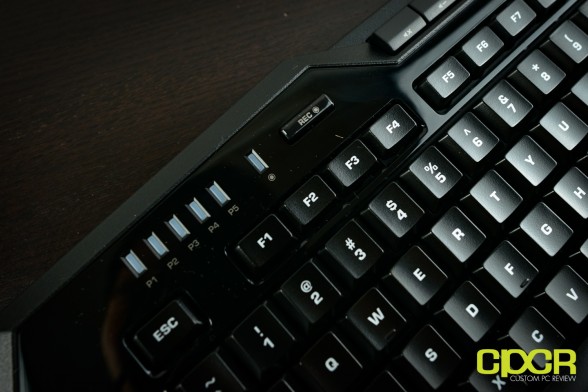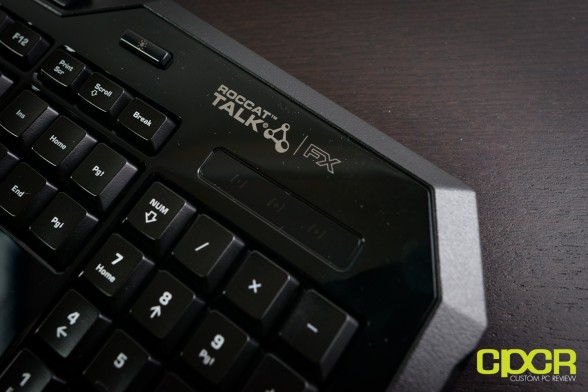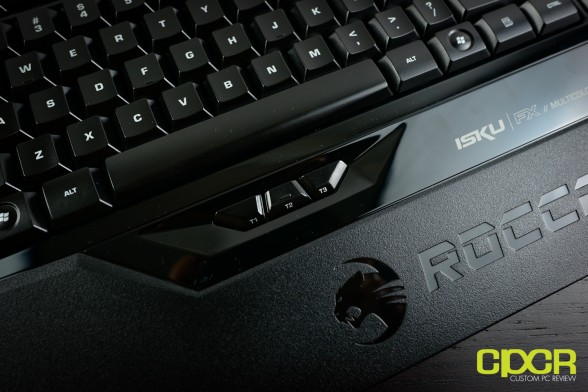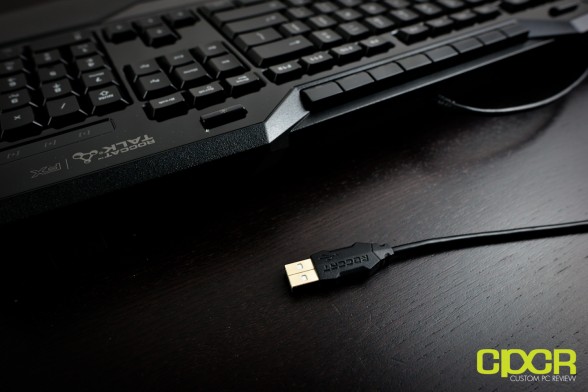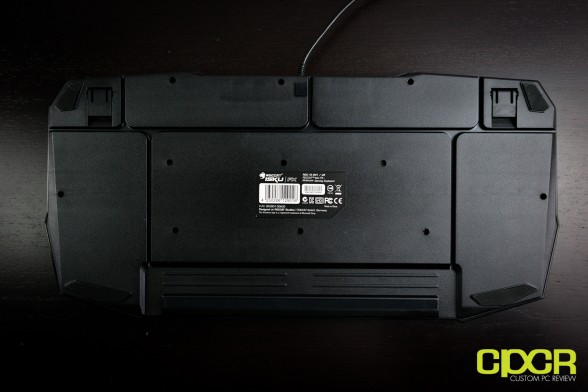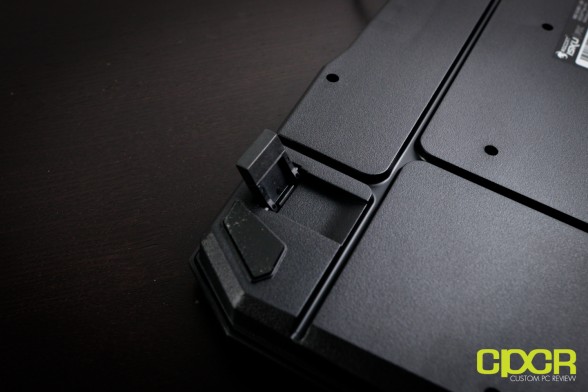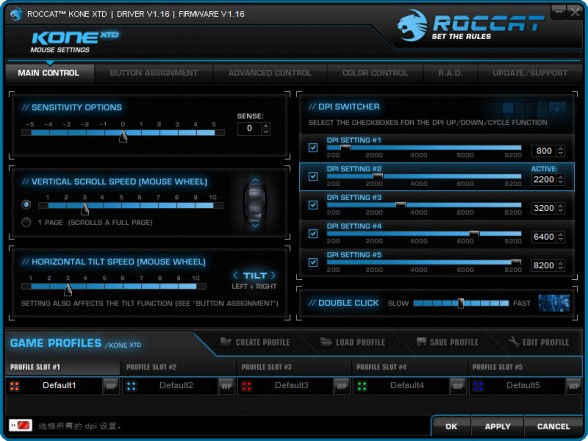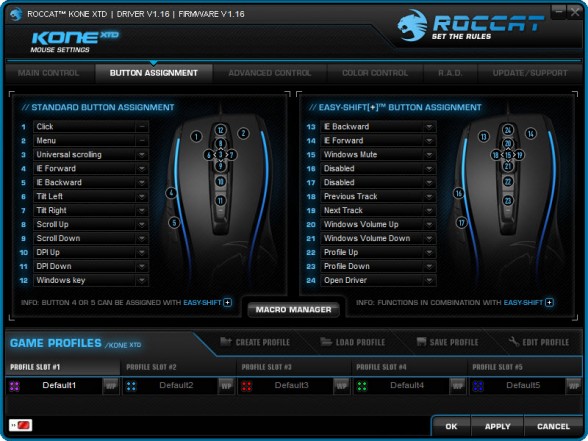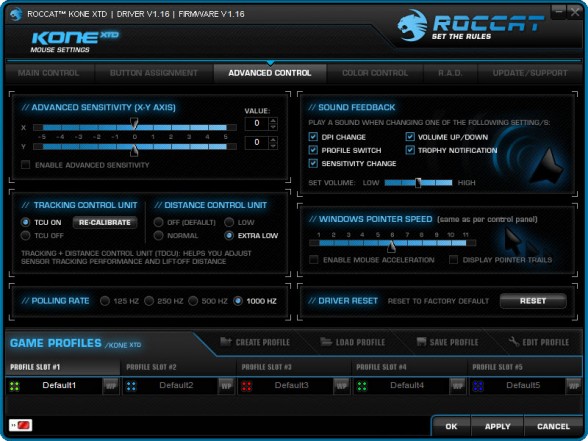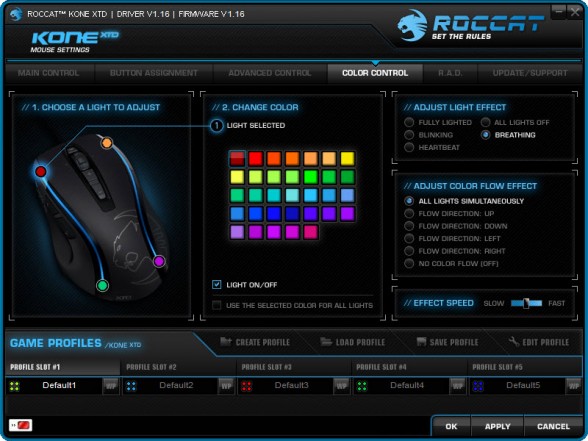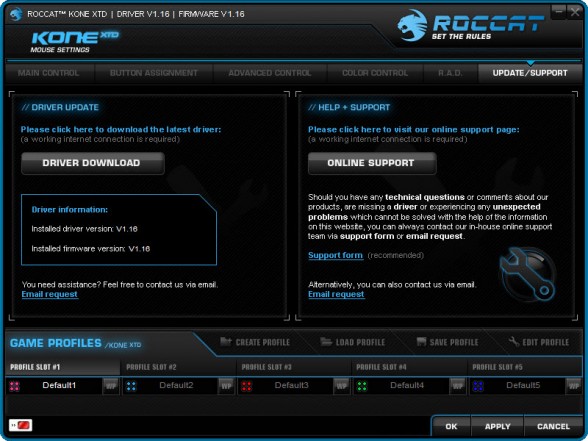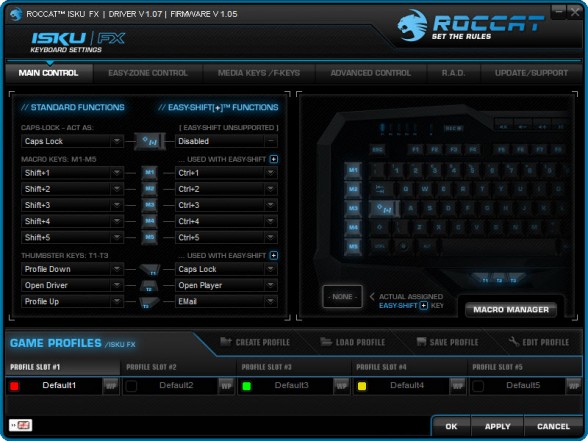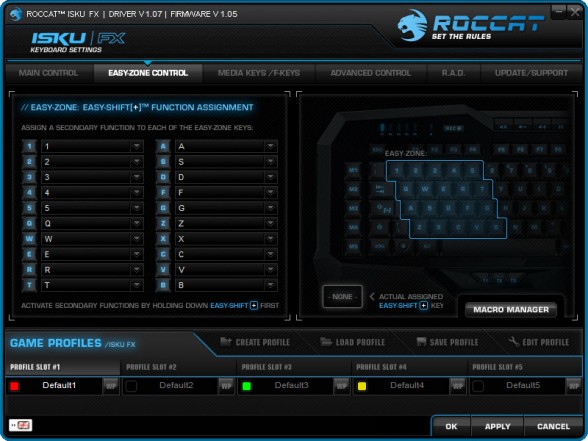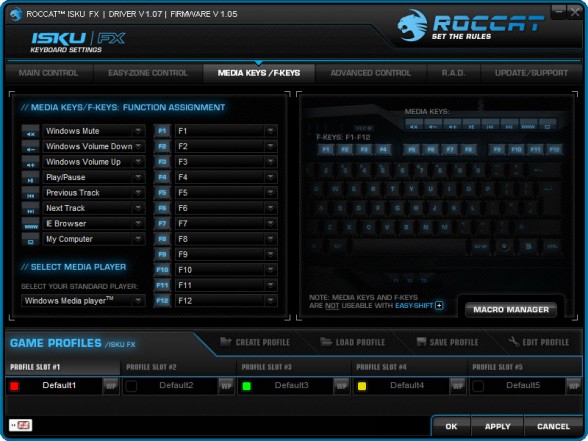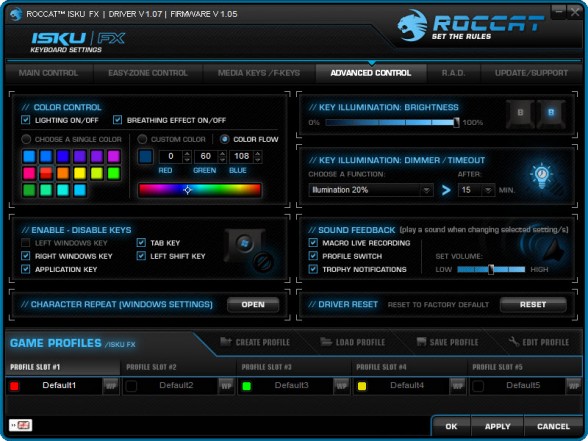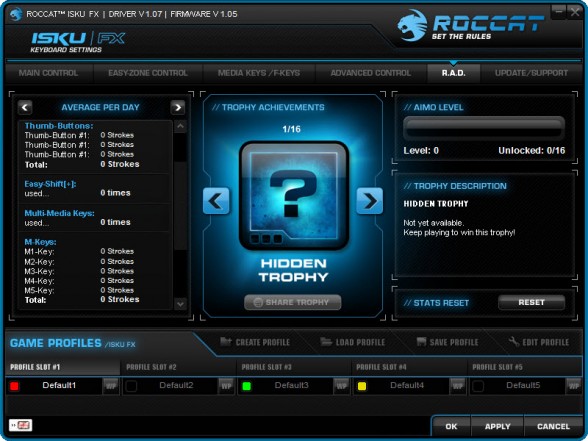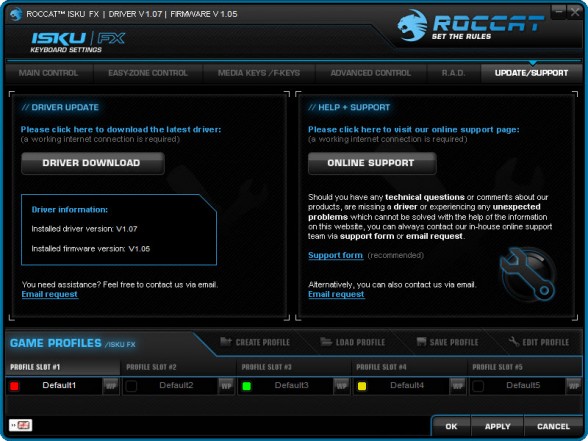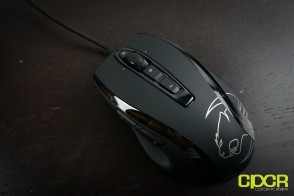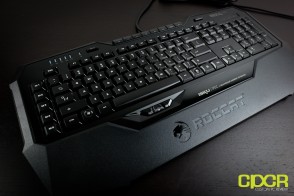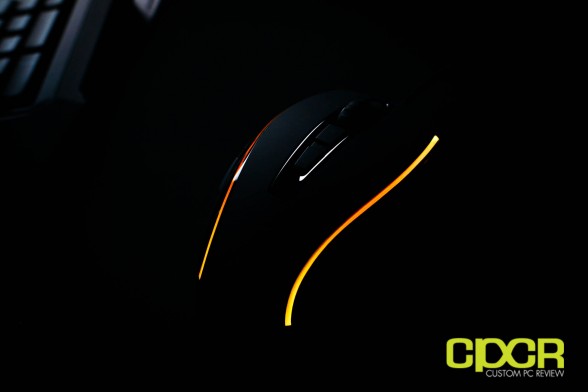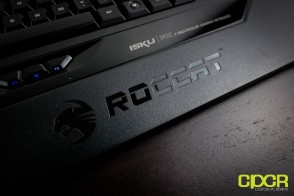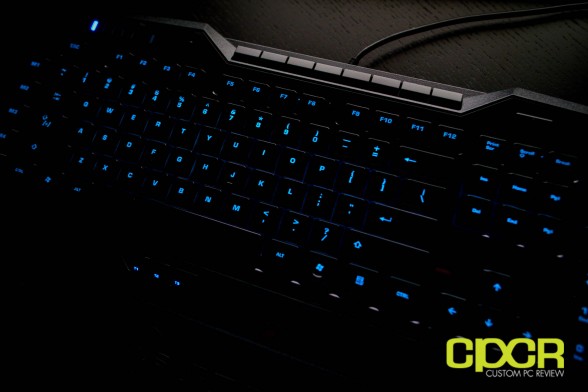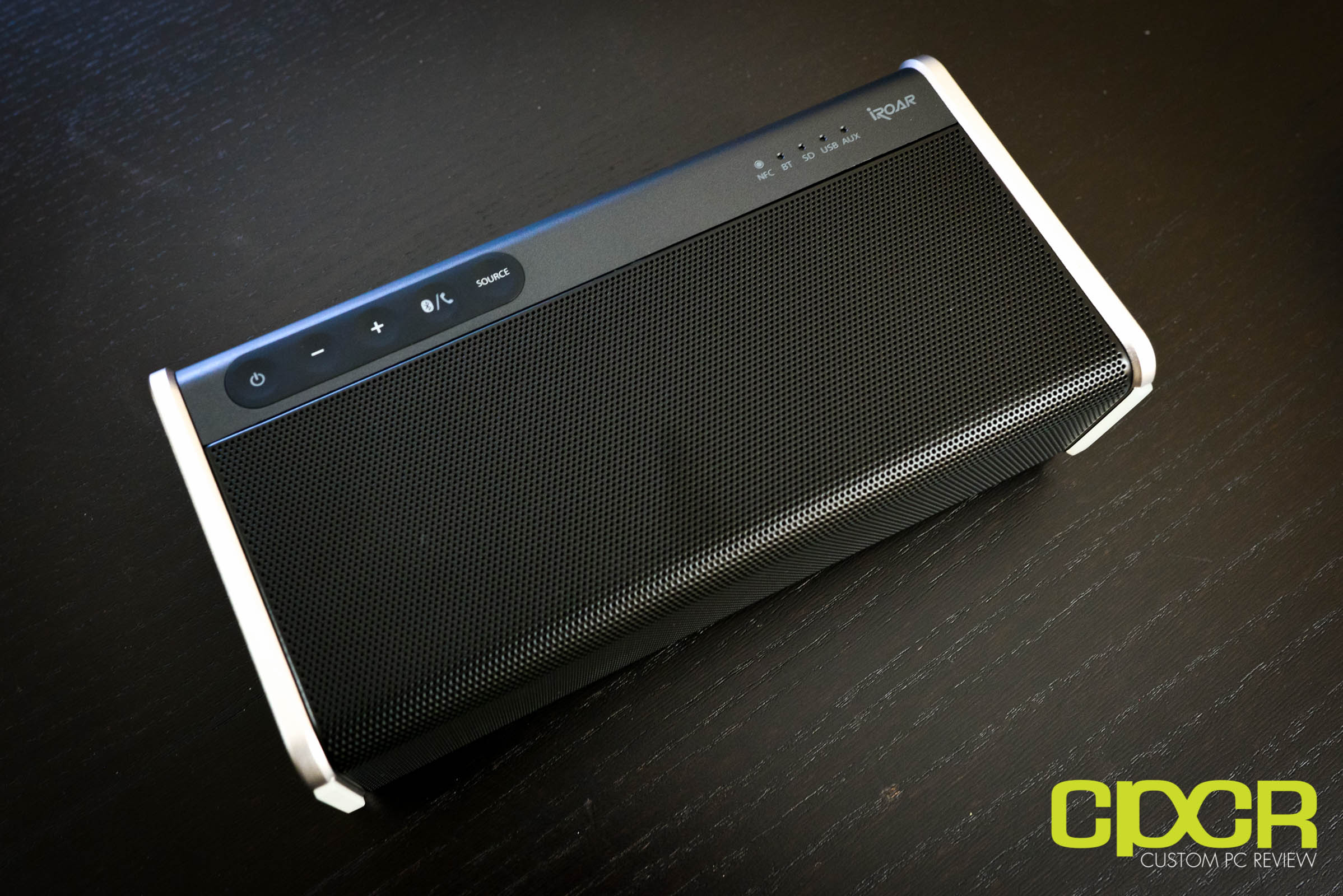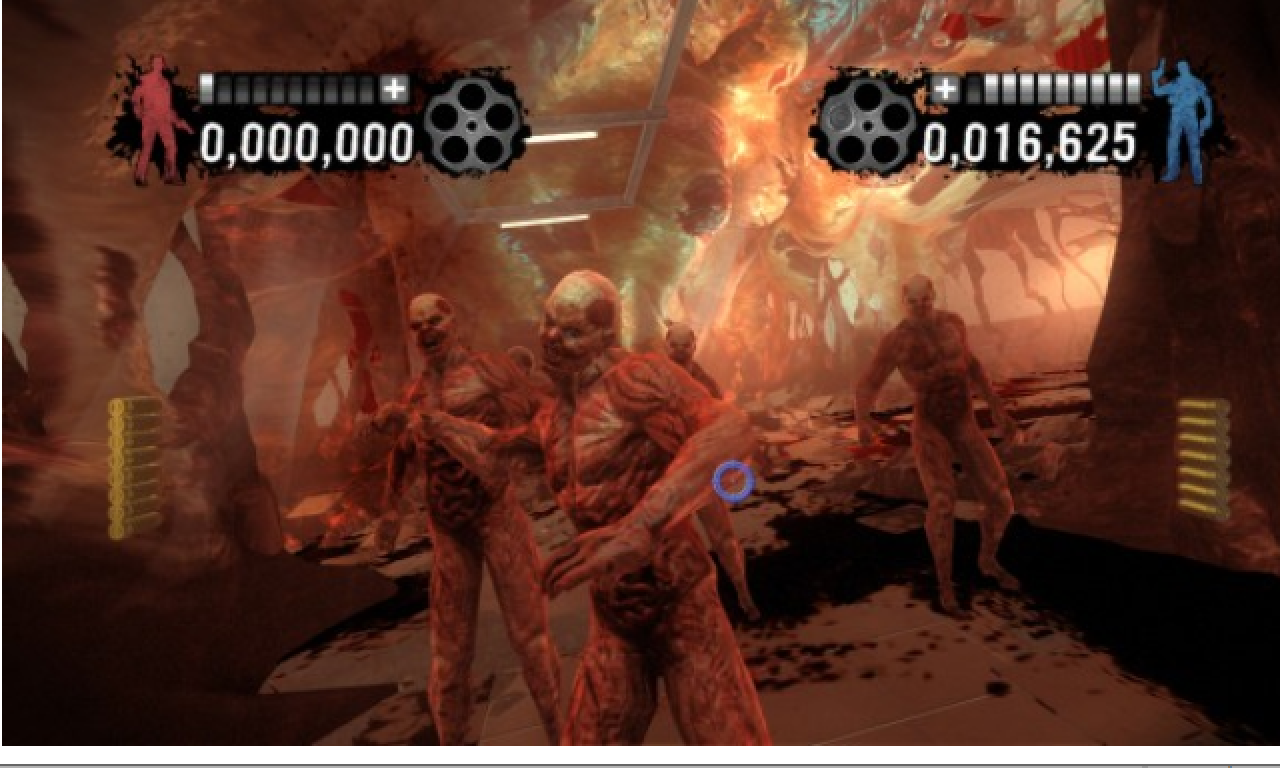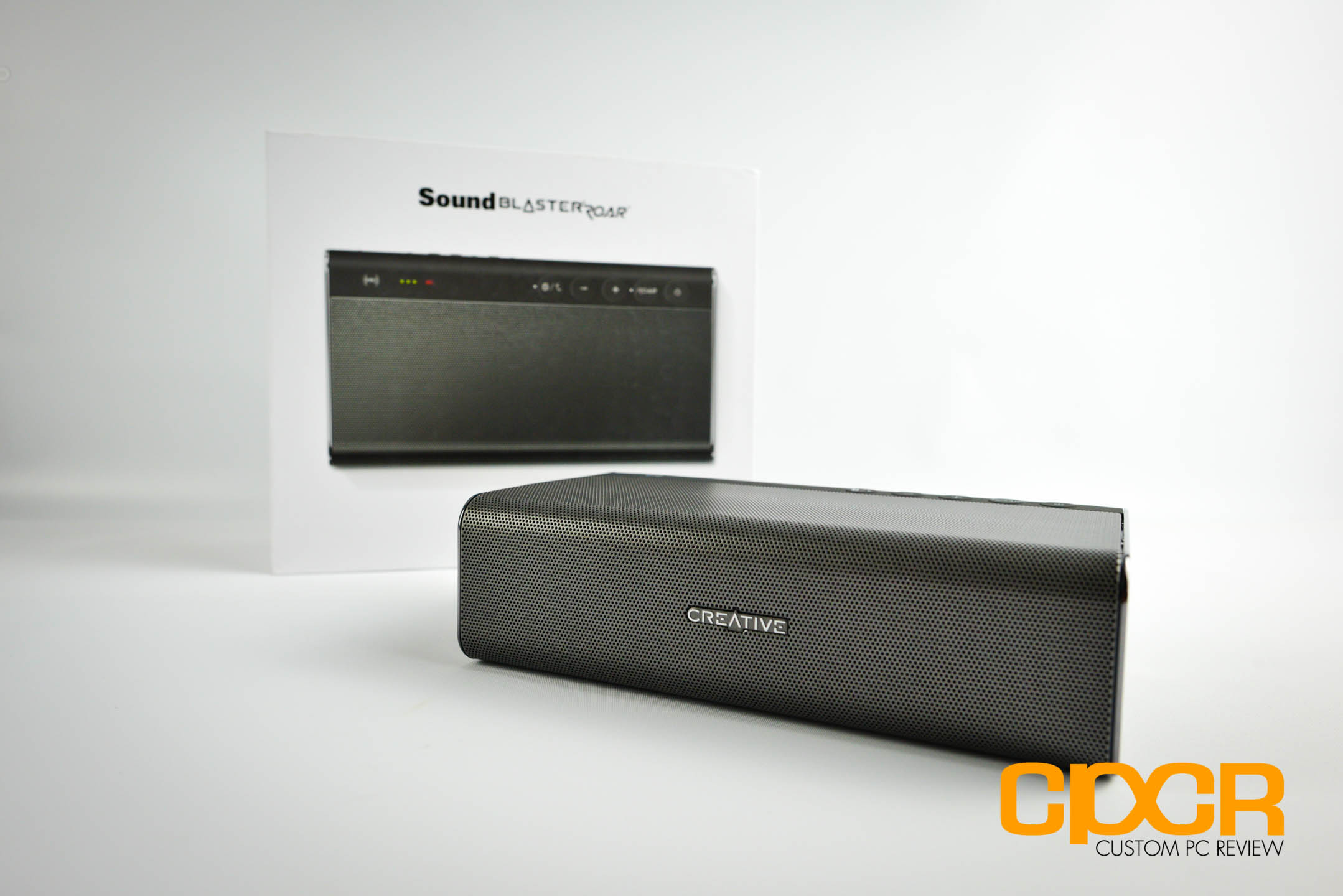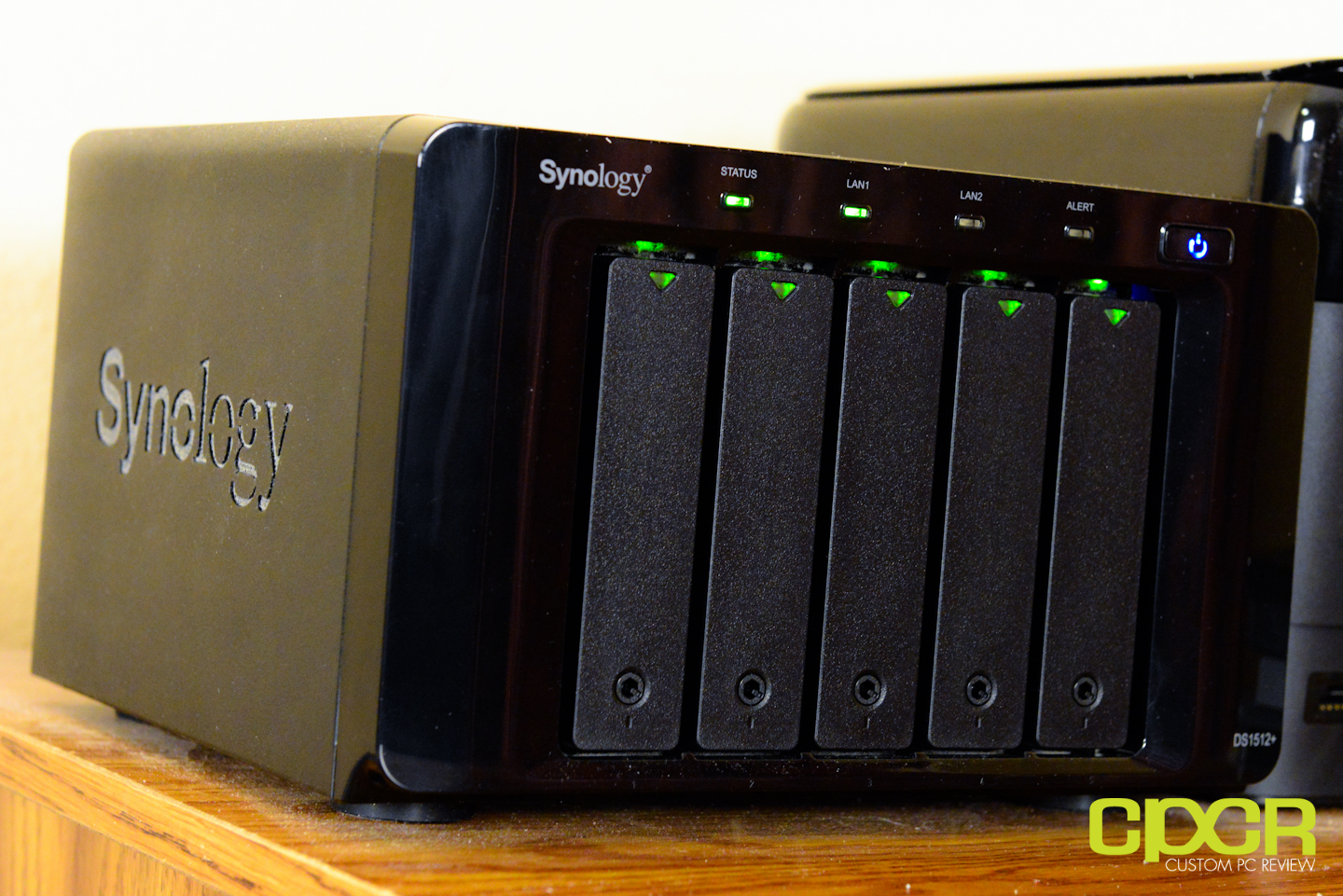[section label=1. Introduction]
ROCCAT Lights it Up
Membrane switches and high-end gaming keyboards don’t mix very well; they’re often overshadowed by the much more tactile and responsive mechanical switches. Although we tend to see membrane switches on budget end keyboards, we do encounter a company that tries to break the norm from time to time by putting them on high end gaming keyboards. Gaming peripheral giant ROCCAT is one such company. A couple months ago, we reviewed the ROCCAT Isku gaming keyboard and was fairly impressed by its beautiful styling, huge programmable macro count and great performance.
However, the Isku isn’t ROCCAT’s only trick in the bag; their Kone [+] gaming mouse was even more impressive. With great ergonomics, programmable buttons, and an adjustable weight system, it easily ranks in as one of the most customizable mice out there.
Today, we’re going to look at two products that further one ups the Isku and Kone [+] as ROCCAT’s flagship gaming peripherals – the Isku FX and the Kone XTD. The Isku FX features a backlighting system, while the Kone XTD got a bunch of hardware upgrades such as a new scroll wheel, a new sensor, and Omron switches. Based on the success of their predecessors, I have high hopes for both products. Let’s find out how well they performed!
ROCCAT Isku FX Specifications
- BLUE KEY ILLUMINATION with 6 brightness levels
- 3 EASY SHIFT[+]™ ZONES for easy key duplication
- 36 EASY-TO-REACH MACRO KEYS including 3 Thumbster keys
- MACRO LIVE! RECORDING with dedicated M-Rec button; 180+ macros in 5 profiles
- 8 CONFIGURABLE MEDIA & HOTKEYS 25+ assignable functions
- MEDIUM-HEIGHT KEYS with an optimum keystroke & pressure point; advanced anti-ghosting; 1000Hz polling rate
- ROCCAT™ DRIVER + MACRO MANAGER incl. Sound Feedback; Macro Presets for games, multimedia and office apps
- EXTRA-LARGE GRANULAR WRIST REST
with special surface texture - INTEGRATED CABLE CHANNELS
for better device organization
ROCCAT Kone XTD Specifications
- FULLY-ADJUSTBALE 8200DPI PRO-AIM (R3) SENSOR with 41 true DPI setting ranging from 200 to 8200
- ROCCAT™ CLICK MASTER switch tech powered by Omron© for precision button activation
- EASY-SHIFT[+]™ BUTTON DUPLICATOR with Easy-Aim + Easy-Wheel functions for max command power
- 32-BIT TURBO CORE V2 PROCESSOR for lightning-fast computing speed
- TRACKING & DISTANCE CONTROL UNIT for less pick-up flight & more precise gaming
- 576KB ON-BOARD MEMORY for storing a wealth of macros and settings
- 4-LED LIGHT SYSTEM for customizable colors + effects
- 8 MOUSE BUTTONS + SOLID 4D WHEEL for a full complement of command options
- 4 EASY-TO-CLIP-IN WEIGHTS (4 X 5G) for customized weight adjustment
[section label=2. A Closer Look: ROCCAT Kone XTD]
A Closer Look at the ROCCAT Kone XTD
Here’s a look at the packaging for the ROCCAT Kone XTD.
Included in the packaging we get a quick installation guide along with some adjustable weights included in the box.
Of course, we also get the Kone XTD itself. The entire outer shell of the mouse is coated in a high quality, matte rubber finish, which is not only comfortable to use, but repels dust and fingerprints quite well. Right up top, we get the left and right mouse buttons, which use high quality Omron switches. We also get the “Titan” scroll wheel, which is what ROCCAT calls their scroll wheel. It’s pretty smooth, but it’s not too different from a standard rubber coated scroll wheel. There’s also the DPI adjustment buttons behind the Titan scroll wheel and a small button in front of it.
The left side of the mouse has a section carved out for the thumb, it certainly looks very comfortable. The forward and back buttons are placed directly above the thumb rest to prevent any accidental bump-ins. As the left side of the mouse includes a dedicated area for the thumb, the mouse is non-ambidextrous and is designed for right handed users only.
As a palm grip mouse, the ROCCAT Kone XTD has a very large and raised back section to support the user’s palm and wrist. There are two strips of LEDs running along the sides of the mouse that can be programmed to glow in different colors. The logo unfortunately, does not light up.
Embedded in the base of the Kone XTD is ROCCAT’s Pro-Aim R3 Sensor. According to the specifications, the Pro-Aim R3 sensor is a laser sensor capable of up to 8200 DPI. The cap right next to the sensor covers the sockets where you insert additional weights. The two front mouse feet, but ROCCAT does make up for it with a large chunk of Teflon feet at the back.
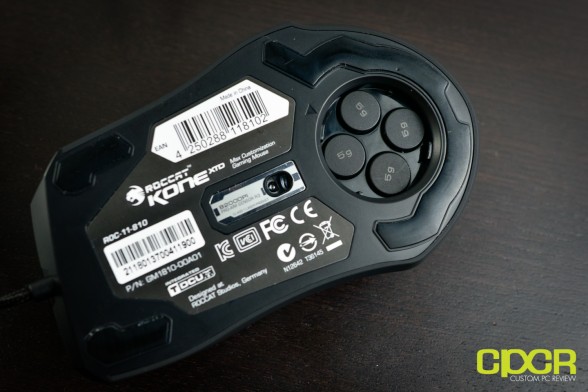
With the lid removed, we can see that ROCCAT has included space for four 5g weights. Here, we’ve installed the weights included in the packaging. The weight of the mouse is 123g + 5g, 10g, 15g, or 20g in optional weights.
The Kone XTD connects via a standard USB connector. The cable is sheathed in a braided fabric which feels strong and is quite flexible.
[section label=3. A Closer Look: ROCCAT Isku FX]
A Closer Look at the ROCCAT Isku FX
Here’s a look at the packaging for the ROCCAT Isku FX.
Not a whole lot going on with the accessories, the only thing that was included was a simple quick installation guide.
First glance reveals nothing new about the Isku FX compared to the original Isku. In fact, without the Isku FX logo above the palm rest, I could hardly tell the two apart. It’s still got the same glossy bezel around the keys, the same huge desk footprint, and the good old media control row at the top.
The Isku FX has 5 banks for programmable macros. When plugged in, the LED corresponding to the bank will light up, indicating the current active bank. The LED bar next to the bank LEDs is the recording LED, which blinks when the user presses the REC (record) button.
The LEDs for the num lock, caps lock, and scroll lock are on the top right hand corner. What’s interesting here is that the ROCCAT Talk feature on the original Isku seems to have received an update to the ROCCAT Talk FX.
The thumb keys are back! The Isku FX includes three thumb keys, which can be reprogrammed as macros. Below that there’s also a built-in textured wrist rest as well.
The Isku FX still uses a USB plug and unbraided cable. Unfortunately, there are still no USB pass-throughs.
The bottom plate of the keyboard is made out of a tougher plastic than the top. There are wire channels to keep things tidy around your desk. Four rubber feet are spread out across the four corners, and there’s one long stripe of rubber placed right underneath where the palm rest is.
Lastly, we also have the kick stands which help raise the keyboard. They don’t have rubber feet on them to keep them from slipping though.
[section label=4. Software: ROCCAT Kone XTD]
ROCCAT Kone XTD Software
The Main Control page provides you with some basic setting adjustments such as mouse/scroll wheel sensitivity. DPI switch increments can also be adjusted here.
Button assignment page is used for, well, button assignments. The Kone XTD comes with 12 programmable keys alone. But if you can program button 4 or 5 to be the EasyShift key to open up another set of macros on the fly, giving you a grand total of 23 macros.
The Advanced Control tab gives you some options to really fine tune your mouse. You can use the slider to change the X-Y axis sensitivity, or enter a value in the value box. The Tracking Control Unit scans your mousepad’s surface through the sensor and calibrates the sensor according to your mousepad’s color and texture. When the Sound FeedBack option is enabled, the epic voice from ROCCAT’s videos will tell you whenever you change a checked setting.
There are four LEDs that can be individually programmed to glow a different color. There are also multiple lighting effects to choose from.
The Update/Support page allows you to upgrade the mouse’s firmware and driver. ROCCAT also threw in a support button for when a driver update fails to fix your mouse.
[section label=5. Software: ROCCAT Isku FX]
ROCCAT Isku FX Software
Here’s a look at the software for the ROCCAT Isku FX. In the Main Control tab we can edit the primary and secondary functions of the macro keys as well as the thumb keys. The secondary functions can be accessed by holding down the EasyShift key, which replaces the caps lock key. A total of five banks can be stored within the keyboard, each with its own color icon to avoid confusion.
A good chunk of the character keys can be programmed with secondary functions as well. Dubbed “EasyZone” by ROCCAT, this area is where a gamer would typically place their hands while playing just about any game. The EazyZone consists of 20 keys and just like the macro keys, these functions are accessed by holding down the EasyShift Key.
Function and media control keys can be reprogrammed too. Practically everything can be reprogrammed as a macro key.
The Advanced Controls tab is consists mostly of lighting customizations. You can also disable/enable the sound feedback function.
The R.A.D. tab is a ROCCAT developed trophy system. If you have audio feedback function enabled, it will give you an audio alert whenever you have a trophy unlocked.
The update page provides you with easy one click update of drivers and firmware. It also allows you to connect with online support for those truly dire situations.
[section label=6. Performance: ROCCAT Kone XTD]
ROCCAT Kone XTD Performance
I felt like I really benefited from having a Kone XTD for Battlefield 3. Its excellent sensors was stable throughout testing. Even at 8200DPI, the mouse pointer remained stable and jitter free. The heavy duty Omron switches were a pleasure to use. They produced very good tactile as well as audio feedback when clicked. The Titan scroll wheel was top notch as well. It had a good surface grip and felt very solid under the finger. Switching between DPIs was made easy by the two buttons behind the scroll wheel. While the teflon feet were marginally undersized, I didn’t notice any bothersome friction. The adjustable weight system was a feature I really liked, but I didn’t add any additional weights on as the Kone XTD was already quite weighty without them.
In order to perform well in Starcraft 2, the utmost precision is required as you are often faced with situations where you had to manage small groups of your army individually. The Kone XTD did very well in this respect. The stable sensor provided accurate tracking and remained stable throughout testing. The Omron switches were very responsive and tactile, no mushiness or input delay was detected even as I spammed the left/right clicks.
With the EasyShift key programmed on to the mouse, I was able to be change the buttons of the Kone XTD into another set of macros on the fly. That said, although it was very simple to use, I found that there’s a still a learning curve since I had to memorize all the button functions. But after I got the hang of things, the Kone XTD increased the speed at which I cast my spells.
Valve’s classical shooter was used to test for mouse acceleration. With the Raw input mode enabled, I detected a slight bit of positive acceleration. But the error margin was so small that I believe it was human error rather than an sensor flaws. Like the previous tests, the Kone XTD remained rock solid throughout testing.
Being a palm grip mouse, the ROCCAT Kone XTD provided my palm with ample of support. The matte surface provided excellent traction, which translated to more control while gaming. The dedicated thumb rest area cradled my thumb and lifted it off the mousepad, therefore reducing unnecessary friction. The plastic used for the Kone XTD felt very heavy duty, infact, its entire construction just felt extremely well done. It was definitely designed to last a very long time.
The premium components used for the Kone XTD was great for everyday use as well. The Omron switches were tactile yet silent. The Titan scroll wheel was simply perfect in all respects. It was accurate, easy on the fingers, extremely quiet, and felt very sturdy. The Pro-Aim R3 sensor also ended on a good note, being steady and jitter less throughout its final test.
[section label=7. Performance: ROCCAT Isku FX]
ROCCAT Isku FX Performance
The Isku FX provided me with a great gaming experience in Starcraft 2. The keys were very tactile and had satisfying feedback pressure. All of my keystrokes registered perfectly with no key skips. The palm rest kept my hand very comfortable and the rubber feet at the bottom kept it steady on the table even as the rate of my key presses reached 100/minute. One thing that did slightly annoy me was the keycaps. They didn’t receive any specialized texture finish so when my fingertips got moist from extended hours of playing the keys felt a little slippery.
The Isku FX scores high point when it comes to usability in first person shooters. The massive palm rest kept my hand comfortable, while its textured surface prevented my sweaty palm from slipping off. Keystrokes were very responsive and tactile despite the fact that the Isku FX uses membrane switches. Unlike mechanical switches, membrane switches do require a longer travel to register, but I didn’t find it to be problematic. The thumb keys below the space bar deserves a special mention. By programming some commonly used in-game commands to them, they sped up the execution as well as allowed the rest of my fingers to stay on the WASD keys.
Unfortunately, I experienced heavy ghosting when the character keys were used in conjunction with the number row. For example, when the Shift, A, and W keys were simultaneously held down, the “4” key on the number row would stop working.
I used Guild Wars 2 to stretch the Isku’s best in-class programmable macros. The macro column on the left edge of the keyboard was very intuitive to use and easily within reach. I had a little learning curve as I had to constantly remind myself to use the keys, but it felt no way forced or tedious. For when I needed more commands to be bound, I used the Easy-Switch buttons. By holding down the EasyShift key while using the macro keys, I was able to bind 5 extra commands. At this point, using them became a little more difficult as my pinkie, which was originally dedicated to press the macro keys, now had to press the EasyShift key.
The ghosting again presented itself to be problematic in this test. I was again unable to use the “4” key when I had “W’,”A”, and “Shift” held down.
The Isku FX was more than sufficient for everyday use. The keys felt great to type on, and the macro keys can be programmed to launch applications. The backlight made spotting keys breeze. While the keycaps did feel more slippery after my hand got sweaty, it didn’t bother me as much as it did in the gaming tests. The media keys at the top made navigating though movies and music a breeze. But unfortunately, they didn’t get the backlight treatment. Unfortunately, even though the Isku FX is ROCCAT’s flagship keyboard, it lacked USB/Audio pass-throughs. This wasn’t a huge deal for me during testing, but I’m sure some users would appreciate them. The chassis Isku FX was fairly lightweight, which made lugging around much easier on my back. That said, its massive size made it a chore to stuff into my bag.
The build quality of the Isku FX was excellent. While I’m not a big fan of the glossy plastic around the keys, the chassis felt very durable. The back of the keyboard is made from heavy duty plastic, which kept its shape even as I purposely tried to flex it. The key caps didn’t move during intense use and the plastic they were crafted out of felt of high quality.
KRO/Anti-Ghosting Testing
As I discovered a ton of ghosting issues while gaming, I decided to do some further investigation using a webapp produced by Microsoft’s Applied Sciences Group. We’ll be using the synthetic test to determine the ROCCAT Isku’s ability to handle multiple keypreses. The webapp can be found here.
The keys in the “game zone” are important for typical first person shooters. The ROCCAT Isku FX stopped registering keystrokes after 8 keys were simultaneously pressed.
Here, I’m holding down the “4” key in the number row with “W”, “A”, and “Shift” held down. Uhh… why’s the 4 not registering? Not good… not good at all.
The ghosting got worse as I moved away from the game zone. In this image, I’m actually holding down “D”,”F”, and “G” key. As you can see, the “G” key didn’t even register even with only two keys held down in the same row. What’s more annoying is that the entire board stopped responding after I held down “D”, “F”, and “G” simultaneously.
[section label=8. Conclusion: ROCCAT Kone XTD]
ROCCAT Kone XTD Conclusions
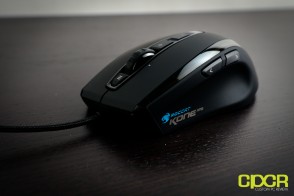 While the Isku FX didn’t prove to be a good investment option, the same is not true for the ROCCAT Kone XTD. With many improvements over the Kone [+], it’s definitely the worthy product to take the crown as ROCCAT’s highest end gaming mouse.
While the Isku FX didn’t prove to be a good investment option, the same is not true for the ROCCAT Kone XTD. With many improvements over the Kone [+], it’s definitely the worthy product to take the crown as ROCCAT’s highest end gaming mouse.
The biggest upgrade the Kone XTD received was the sensor. Equipped with ROCCAT’s Pro-Aim Sensor R3, it’s a huge step up from the Pro-Aim Sensor R2 used for the ROCCAT Kone [+]. Not only did the new sensor offer a boost in DPI count (8200DPI as opposed to 6000DPI), gone was the annoying jitter and acceleration issues. The new sensor quickly distinguished itself in my gaming tests: Aiming in Battlefield 3 felt intuitive and smooth, which made dominating my opponents that much easier. In Starcraft 2, being able to select and control individual units in the heat of battle is crucial to victory. Thanks to the accurate and jitter free sensor on the Kone XTD, I was able to quickly select the unit I wanted to control and issue commands. The scroll wheel got an overhaul as well. ROCCAT dumped the flimsy wheel on the Kone [+] in favor of the Titan wheel. And honestly speaking, it was the best scroll wheel that ever came into contact with my index finger. Its excellent precision, dead silent operation, and solid materials ranked itself the #1 spot in terms of scrolling comfort. The Omron switches were exceptional as well, being tactile, responsive, and very quiet. The huge amount of macros that was available initially felt more like a chore to use in Guild Wars 2, but the steep learning curve was worth it. Just as the Isku FX, my performance in Guild Wars 2 improved after I memorized the button functions. The adjustable weight system was a welcoming feature as always. Although I preferred the Kone XTD without any additional weights, I’m sure there are Hulk-armed gamers out there that would really appreciate this feature.
Not only did the Kone XTD kick ass in performance, it did so without destroying my hand and wrist. My palm was able to find a good home on the Kone XTD’s large, grippy back section. The dedicated thumb rest area not only kept my thumb comfy, it also reduced unnecessary friction by lifting it off of the mouse mat. The build quality of the Kone XTD is top notch. Crafted with heavy duty plastic, braided cable, and a high quality matte finish, it really shows that ROCCAT designed that this mouse to last a very long time. Although the Teflon feet of the Kone XTD seemed a bit small, I didn’t feel any significant friction through the testing process.
For a gaming mouse this good, I’d been happy to pay $100+ for it, but to add to its awesomeness, ROCCAT slammed on a price tag of just $79.50 for the ROCCAT Kone XTD. It’s not often that I come across a piece of gaming gear so refined, and I think this is the first time that something in my lab did its job so well that I failed to spot any flaws. If we had a Platinum Editor’s Choice Award, this would be the product that gets it.
Sample provided by: ROCCAT
Available at: Amazon
[section label=9. Conclusion: ROCCAT Isku FX]
ROCCAT Isku FX Conclusions
Built on the previous success of the ROCCAT Isku, ROCCAT Isku FX has a ton of excellent features that makes it a good keyboard.The plethora of macros helped level my game in Guild Wars 2 as I was able to execute commands that would normally require many key combinations at the flick of a finger. The excellent responsiveness and tactility of its membrane switches took me by surprise when I played Starcraft 2; and thanks to this, I was able to dominate my opponents much more comfortably Controlling movies and music was made easy with the dedicated media keys, but using them in the dark proved to be a pain as they weren’t backlit. Speaking of backlighting, the customizable backlights on the Isku FX was simply gorgeous.
The Isku FX’s comfort and build quality was top notch as well. The large wrist rest made my hands feel like they were sitting on clouds while the rubber feet kept it still on my desk even as I hammered the keys. The keycaps felt durable and didn’t sway during testing. But they weren’t very grippy and became slippery after prolonged use due to sweaty fingers. The glossy plastic bezel was a huge fingerprint magnet, but they didn’t feel cheap. To add to its durability, ROCCAT crafted the base of the Isku FX out of a very strong type of plastic that didn’t flex when I exerted a considerable amount of force trying to bend it.Even with the quality materials, the keyboard was still light enough to be called travel friendly–as long as you have a bag that can fit it.
However, the story with the Isku FX wasn’t all happy and sparkly. Not by a long shot. While performing the Battlefield 3 test, I found that I was unable to use the “4” key when “W”,”A”, and “Shift” keys were pressed simultaneously. After seeing similar results in other games, I did some extensive testing using a webapp developed by Microsoft’s Applied Sciences Group and it was determined that the ROCCAT Isku FX has a serious ghosting problem. In order to make sure that I didn’t just receive a faulty board, I conducted the test with two different Isku FX samples. Both exhibited identical issues, which tells me it’s an inherent issue with the Isku FX.
With all that said, I can’t see myself recommending the Isku FX. Even though it looks great, feels great to use, and is built pretty tough, its horrible ghosting issues makes it a terrible gaming keyboard. So much for ROCCAT’s claims of “Enhanced anti-ghosting capability”. My opinion? You’re way better off spending that same hundred on a mechanical keyboard with NKRO and real anti-ghosting features.
Sample provided by: ROCCAT
Available at: Amazon

